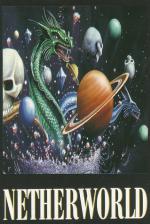Other Reviews Of Netherworld For The Amiga 500
Netherworld (Hewson Consultants)
Hewson's unusual shoot 'em up cum maze game has been converted to 16-bit by West Yorkshire programming team Imagitec. Featuring colourful graphics and eight-way scrolling, the Amiga version presented few problems. But how did the ST fare? Steve Jarratt tells all.


 1st January 1989
1st January 1989



